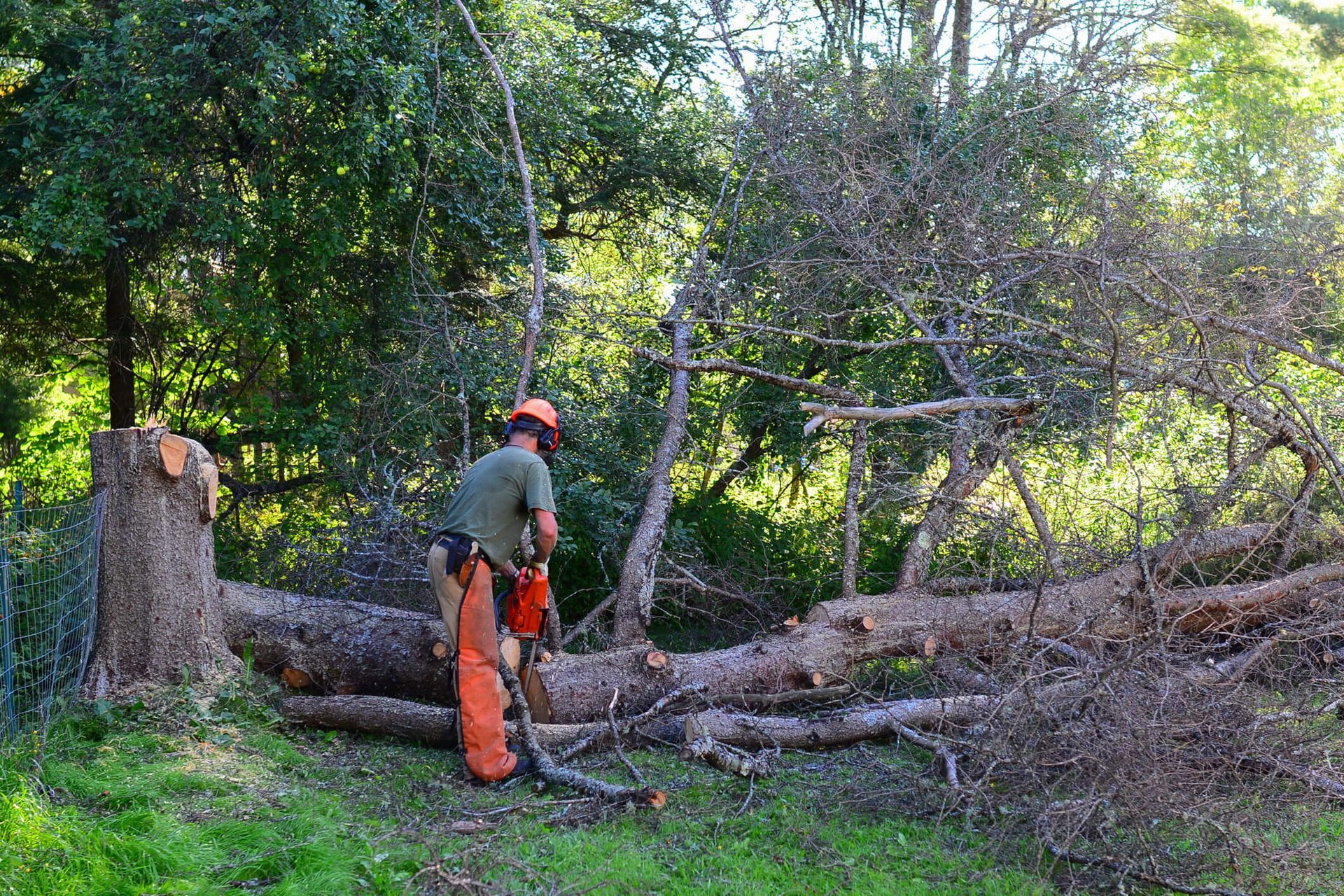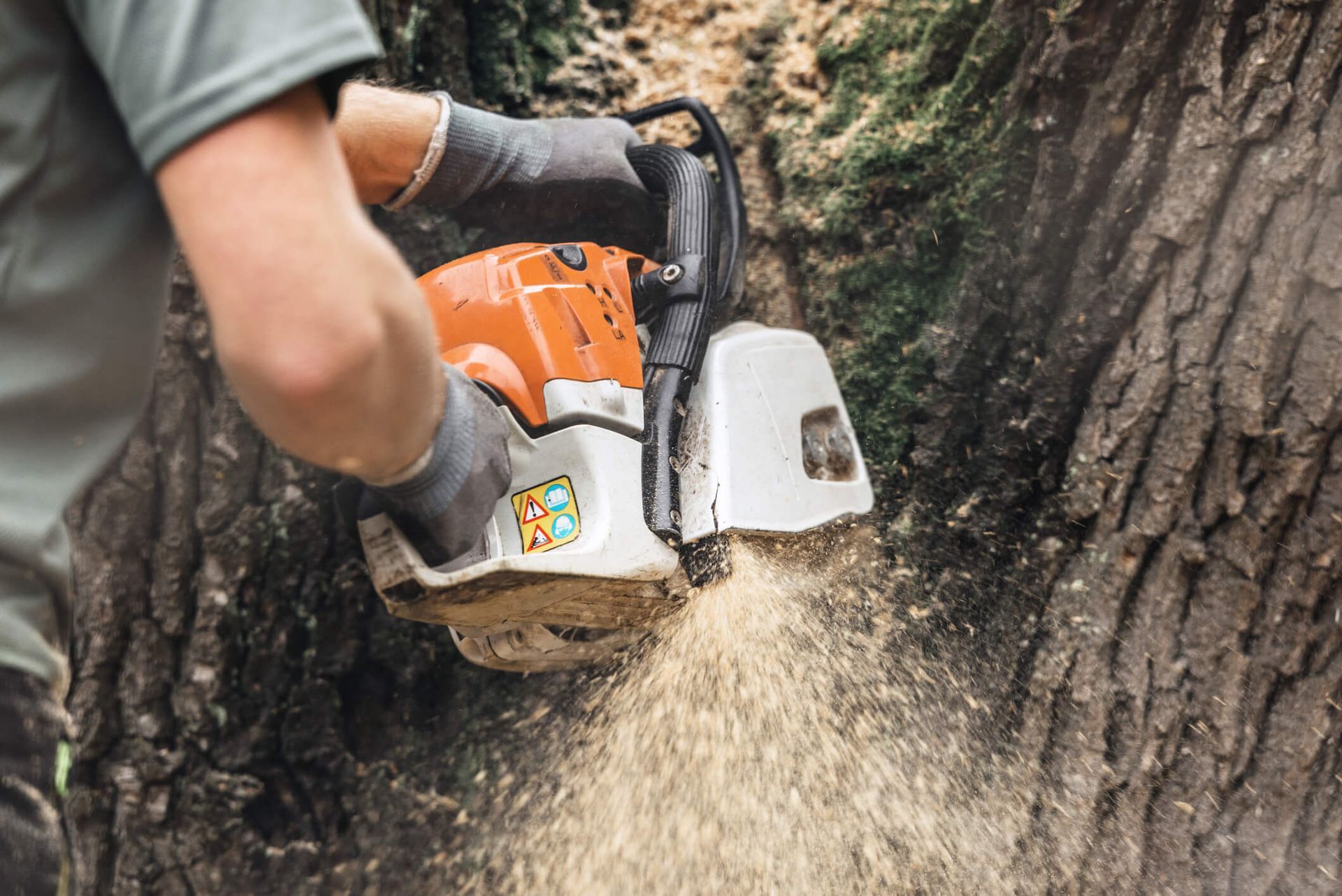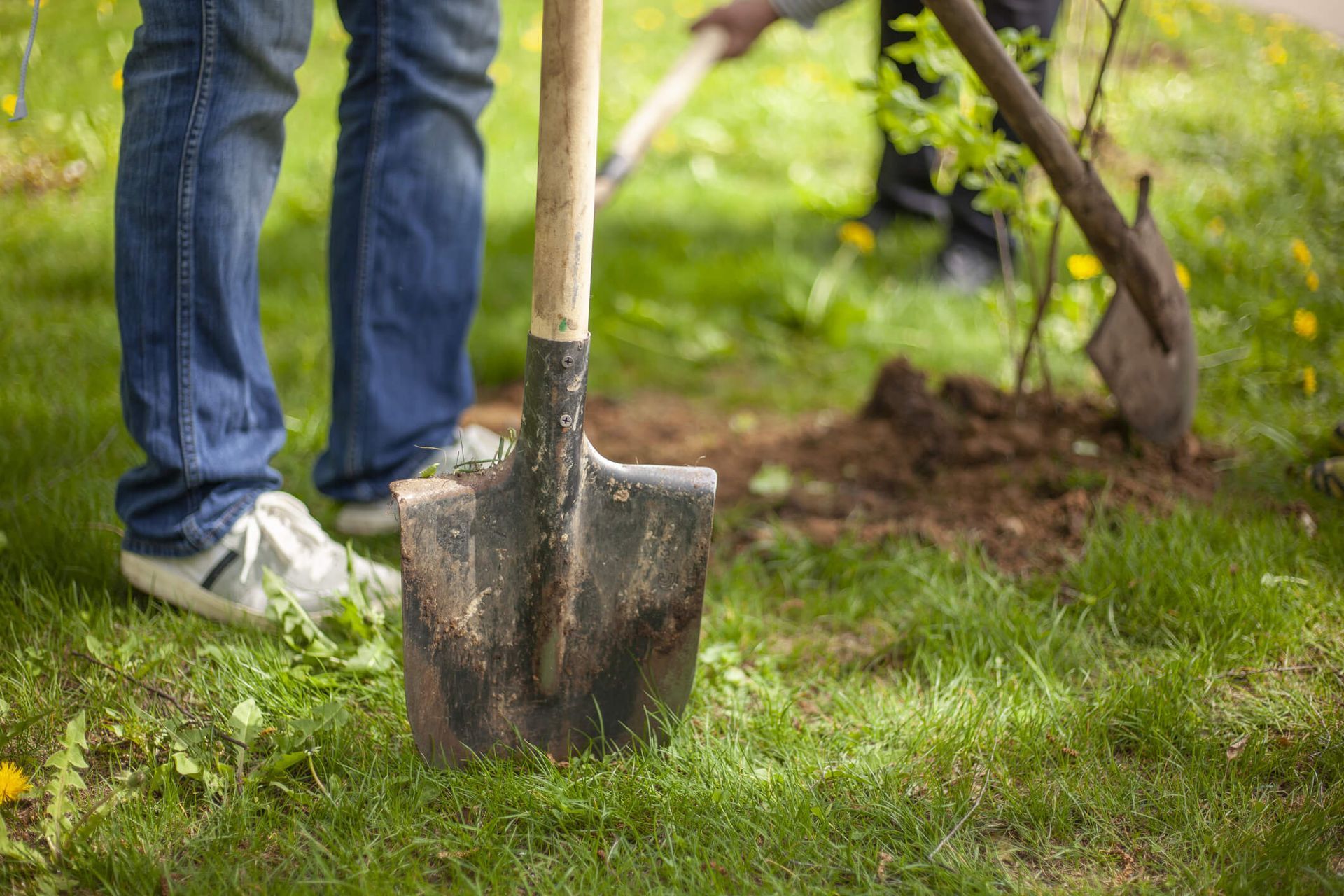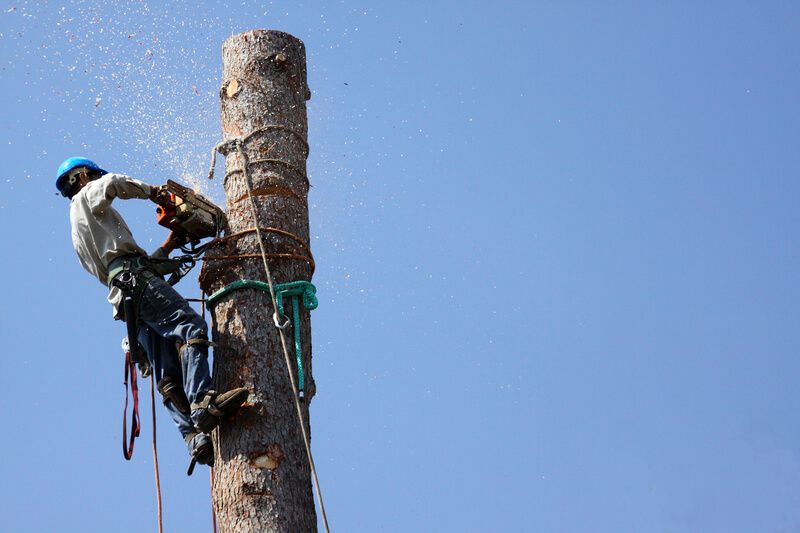What Situations Are Tree Removal Services Needed?
There will undoubtedly be a time when you need tree removal services if you're a homeowner having trees on your property.
When a tree needs to be trimmed or removed, tree removal services are required. Moreover, tree care services provide stump removal, arborist reports, and tree inspections.
With storm-damaged or fallen trees, tree removal services may occasionally be required in an emergency situation.
In this article, we'll explore things about some of the most common situations where tree removal services are needed, as well as the importance of working with a qualified and experienced tree removal company.
Types of Tree Removal Services
There are several types of tree removal services that you can consider:
Complete tree removal. This type involves cutting down the entire tree and removing it from the property.
Tree trunk removal. In some cases, a tree may have fallen or been cut down, but the trunk is left behind. This tree service involves removing the trunk of the tree from the property.
Stump grinding. After a tree is cut down, a stump may be left behind. Stump grinding involves using a machine or equipment to grind the stump down to below ground level, making it easier to cover with soil and grass.
Tree limb removal. This type of tree service involves removing individual branches or limbs from a tree. It may be necessary to remove limbs that are dying, dead, diseased, or pose a dangerous risk to people or property.
Emergency tree removal. In the event of a storm or other emergency, a tree may need to be removed quickly to prevent further damage. This service involves prioritizing the removal of trees that pose an immediate threat.
It's important to hire a professional tree removal service to ensure that the work is done safely and efficiently. A professional will have the expertise and equipment necessary to remove the tree without causing damage to surrounding structures or the environment.
Tree Removal
A tree would need to be completely removed in a number of circumstances. A mature tree must be removed carefully, which calls for knowledge and powered tools like chainsaws. A professional tree removal service is required for trees bigger than a single-story house.
A tree removal service will also provide you with advice on how to dispose of the tree after it has been removed and how to secure any necessary licenses. If the tree can be salvaged, a qualified arborist from a tree removal business may also do an assessment and offer advice on other options besides removal or the best way to get rid of the tree.
Reasons for Tree Removal
There are several reasons why a tree may need to be removed, including:
Safety concerns: Trees that are dying, dead, diseased, or damaged may pose a safety hazard, especially during high winds or storms. In such cases, it may be necessary to remove the tree to prevent it from falling and causing damage or injury.
Structural issues: Trees with structural issues such as large cavities or weak branch attachments may also pose a safety hazard and may need to be removed.
Interference with structures: Trees that are growing too close to structures like homes, powerlines, or in driveway may need to be removed to prevent damage to the structure or blocking of the street and sidewalk.
Over crowding: When trees are growing too close together, they may compete for resources, limiting their growth potential and potentially leading to weaker and less healthy trees. In such cases, it may be necessary to remove some trees to improve overall tree health.
Landscaping or renovation needs: Trees may need to be removed to make room for new construction, landscaping, or other outdoor activities.
Pests and diseases: Trees that are infected with pests or diseases may need to be removed to prevent the spread of infestation to other trees.
Aesthetic Reasons: If a tree is detracting from the appearance of a property, or if it is obstructing a desired view, it may need to be removed.
It is important to note that tree removal should always be done by a trained and experienced professional, as it can be a dangerous and complicated task.
Tree Removals costs
The estimated amount cost to remove a tree in the United States is $871, but based on current market rates, you may expect to pay anything from $225 to $3,900. Tree removal companies frequently base their rates for their services on the size and kind of tree that needs to be removed. For instance, it would cost more just to remove towering trees over 30 feet than medium or small trees under 25 feet.

When to contact a Tree Removal Service
It is important to contact a tree removal service in several situations, including:
Removing Old Trees. To make place for new trees to grow, overgrown or older trees that have decaying or dead trunks, weak soil and roots, and barren crowns should be cut down.
Preparing for hurricane/storm season. You might be advised to remove or considerably trim any tall or unstable trees in your lawn or yard as part of the preparations needed to secure your home before a storm or hurricane. Companies that specialize in tree trimming and removal for hurricane preparedness exist in storm-prone areas, and they can help you decide the best course of action.
Construction clearance and other uses. Whether you want to build, need much less shade, want to start a new garden, etc., you can ask a tree removal business to clear the area on your property.
Dead or Diseased Trees. If a tree is dying, dead or diseased, it can pose a significant risk to people and property. Dead trees can fall or drop branches unexpectedly, while diseased trees can weaken and become unstable. In either case, it is best to have the tree removed by a professional tree removal service.
Obstructing or Damaging Property. If a tree is obstructing a building or power lines, or if its roots are causing damage to structures or hardscaping, it may need to be removed.
Safety Considerations for Tree Removal
Tree removal can be a dangerous task that requires careful planning and execution to ensure the safety of people, property, and the environment. Here are some safety considerations to keep in mind when removing trees:
Assess the situation. Before starting the tree removal process, assess the site's surroundings to identify any potential hazards such as powerlines, buildings, or other structures that may be in the way. Determine the direction in which the tree will fall and make sure it is clear of any obstacles.
Proper equipment and gear. Ensure that you have the proper equipment and gear to safely remove the tree, such as chainsaws, ropes, ladders, and safety gear. Make sure that all equipment is in good working condition and that you know how to use it properly.
Proper training. It is essential to have the necessary training to perform tree removal safely. This includes understanding the physics of tree felling, knowing how to use equipment safely, and following established safety protocols.
Safety gear. Wearing the appropriate safety gear, including hard hats, eye and ear protection, and safety shoes, is essential. Additionally, chainsaw chaps or pants can provide added protection from cuts and lacerations.
Communication. Communication is critical when removing a tree. Ensure that everyone involved in the process knows their role and responsibilities, and that communication is established between team members.
Clear the area. Clear the area around the tree, and make sure there are no people or pets in the vicinity. Keep the work zone clear of debris and obstacles.
Controlled tree removal. It is important to control a tree's fall by using ropes or other equipment to guide its direction. Do not rely on the tree's natural lean to determine its fall direction.
Professional help. When in doubt, it is always best to seek the help of a professional tree removal service. They have the experience, equipment, and training needed to safely remove trees.
By following these safety considerations, you can ensure a successful and safe tree removal process.
What Situations Require Tree Removal Services?
Tree removal services may be needed in a variety of situations, including:
Dead, Dying or Diseased Trees. Trees that are dead, dying, or diseased may need to be removed to prevent safety hazards and to avoid the spread of disease to other trees.
Overcrowded Trees. Trees that are growing too close to each other may need to be removed to allow for proper growth and to prevent damage to property.
Property Damage. Trees that have caused damage to property, such as roots that have lifted a sidewalk or driveways, may need to be removed to prevent further damage.
Storm Damage. Trees that have been damaged in a storm or high winds may need to be removed to prevent further damage to property or risk of injury to people.
Landscaping and Construction Projects. Trees that are in the way of a construction project or a new landscaping design may need to be removed to make way for the new plans.
Pest Infestation. Trees that are infested with pests or insects may need to be removed to prevent the spread of the infestation to other trees and plants.
Safety Concerns. Trees that pose a safety risk to people and property, such as those that are leaning on roof and gutters or unstable, may need to be removed to prevent potential accidents.
Erosion. Trees that have contributed to soil erosion may need to be removed to prevent further erosion and stabilize the soil.
It's important to note that tree removal should always be done by a professional tree removal service with the necessary equipment and expertise to ensure the safety of both people and property.
Conclusion
In conclusion, tree removal services are needed in a variety of situations where a tree poses a potential risk to people or property. Whether it's a dead, dying, or diseased tree, a tree with hazardous branches, or a tree that's in the way of construction or landscaping projects, professional tree removal services can help mitigate the risk and ensure safe removal of the tree. It's important to consult with a licensed and insured tree removal service to assess the situation and determine the best course of action for the safety of all involved. Overall, timely and professional tree removal can help protect your property and keep you and your family safe.
Are you dealing with an overgrown, dead or dangerous tree on your property? Don't wait for the situation to get worse! Contact us right away at SYS Enterprises Tree Services. We are a professional tree services company in Charlestown IN that is an expert in tree removal, stump grinding and removal and other tree services. Whether you need a tree removed due to storm damage, disease, decay, or simply to clear space, our experts can help. Don't risk your safety or the health of your property - schedule your tree removal service today!
FAQs: What Situations Are Tree Removal Services Needed?
1. What are the signs that a tree needs to be removed?
Signs include:
- Dead or dying branches.
- A leaning trunk.
- Significant leaf loss.
- Visible decay or disease.
If a tree poses a safety hazard, it should be removed.
2. Can I remove a tree myself?
While it’s possible, tree removal can be dangerous and complex. Hiring a professional tree removal service is advisable to ensure safety and proper technique.
3. How much does it typically cost to remove a tree?
The average cost to remove a tree in the U.S. is around $871, but prices can range from $225 to $3,900, depending on factors such as tree size, type, and location.
4. What should I expect during the tree removal process?
Expect an initial assessment, followed by careful planning to ensure safety. The tree will be cut down, and the area will be cleaned afterward. Stump removal or grinding may also be included.
5. Is tree removal covered by homeowners insurance?
Typically, homeowners insurance covers tree removal if the tree causes damage to your property. It’s essential to check your specific policy for details and coverage limits.
6. What happens to the stump after tree removal?
After removal, you can have the stump ground down, which allows for new growth in that area, or you can leave it and let it decompose over time.
7. How do I choose a reputable tree removal service?
Look for licensed and insured companies with positive customer reviews and experienced staff. Ask for quotes and check references before making a decision.
8. What should I do if a neighbor’s tree falls on my property?
Contact your insurance provider and your neighbor to assess the situation. If the tree was healthy, your insurance may cover removal costs; your neighbor may be liable if it was dead or diseased.
9. Are there any regulations for tree removal in my area?
Yes, local laws may dictate specific regulations regarding tree removal, especially for protected species or public trees. Check with your municipality for guidelines.
10. How can I prepare my property for tree removal?
Clear the area around the tree of obstacles, and ensure that pets and people are at a safe distance. Discuss any necessary preparations with the tree removal service.
You might also like
Book a Service Today
We will get back to you as soon as possible
Please try again later
Get In Touch With Us
Contact us for a quote
Location
Charlestown, IN
yschilt4@gmail.com
Call
502-724-6950
All Rights Reserved | Sys Tree Service


